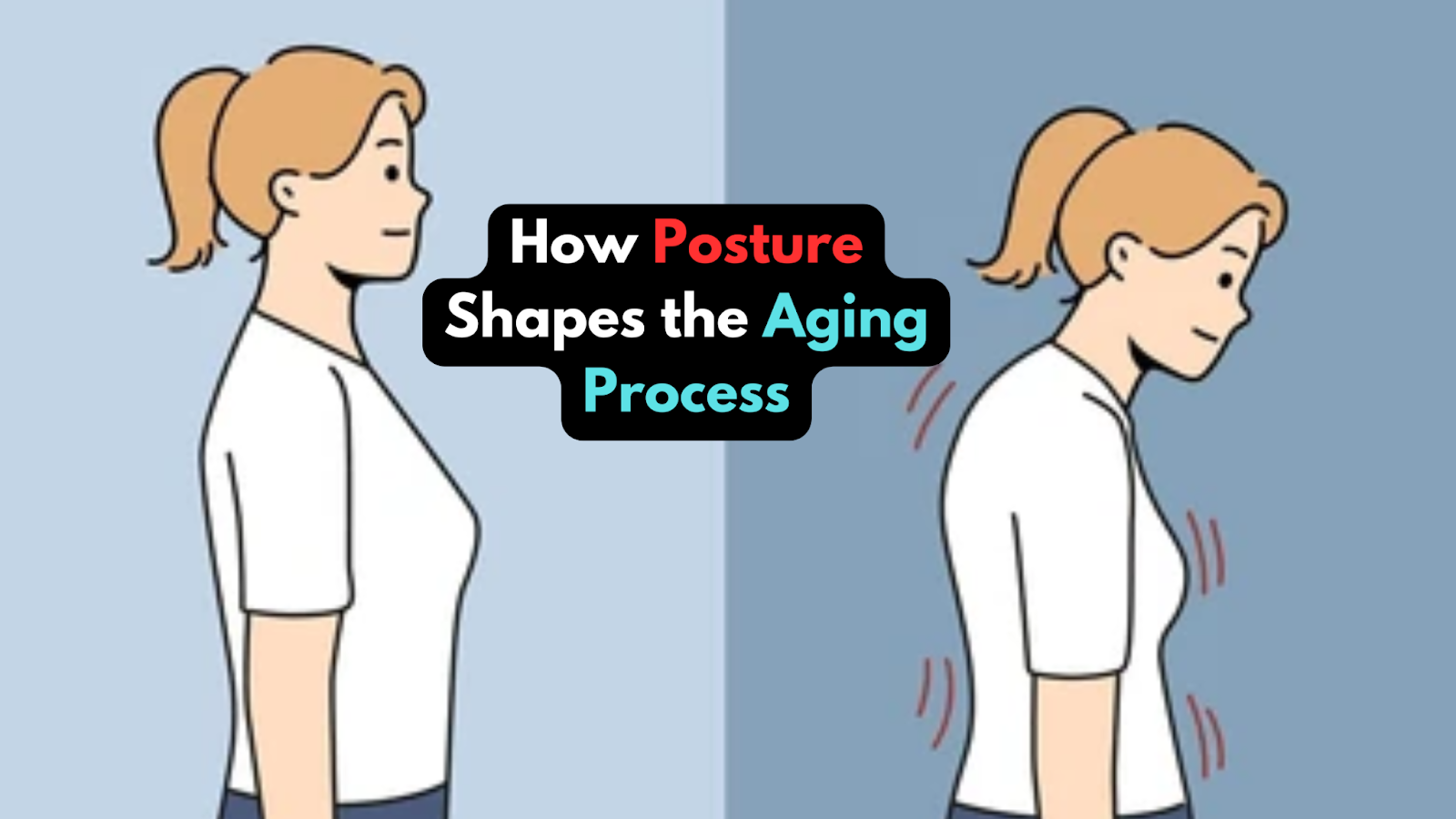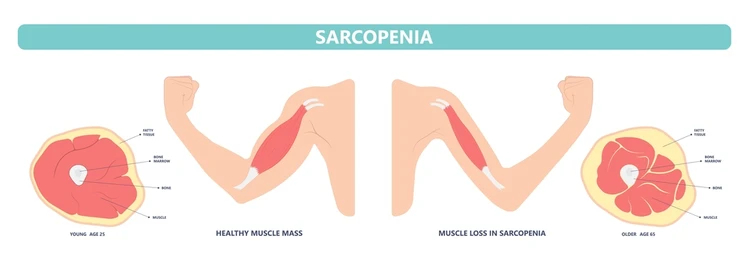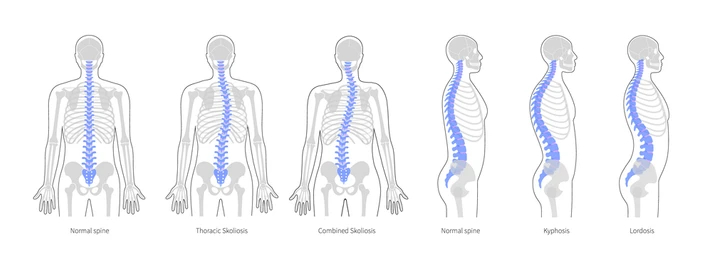
Aging is often associated with wrinkles and gray hair, but one overlooked factor silently accelerates functional decline: posture. Research reveals that posture isn’t just about standing tall-it’s a window into spinal health, balance, cognitive function, and even longevity. In this blog post, we delve into how poor posture accelerates aging, supported by scientific data and statistics, while sharing tips on effective posture optimization for healthy aging.
1. Spinal Degeneration: The Silent Culprit in Age-Related Spine Changes
The spine undergoes dramatic changes with age. A study of adults aged 20–89 found that cervical lordosis (neck curvature), thoracic kyphosis (upper back rounding), and knee flexion progressively worsened after age 50, with women showing more pronounced changes than men. By middle age, adults lose approximately 0.5 inches of height per decade due to spinal compression-a process exacerbated by poor posture.
-
Cervical Spine: Neck curvature increases by 4–6 degrees per decade in women, contributing to “tech neck” and chronic pain.
-
Thoracic Kyphosis: Older women exhibit a 12–15% deeper kyphosis compared to younger counterparts, linked to osteoporosis and muscle atrophy.
-
Lumbar Flattening: Reduced lumbar lordosis (lower back curve) increases pressure on spinal discs, raising osteoarthritis risk by 30% in adults over 60.
These changes disrupt the body’s sagittal balance, forcing compensatory shifts that strain joints and muscles.
2. Muscle Loss and Balance: Breaking the Cycle
Poor posture accelerates sarcopenia (age-related muscle loss) and destabilizes balance. Slouching weakens core and back muscles, reducing their cross-sectional area by 3–8% per decade after age 30. This muscle weakness compounds balance issues:
-
Postural Instability: Adults over 60 exhibit 40–50% greater postural sway in unstable conditions, increasing fall risk.
-
Gender Differences in Balance: Women over 65 rely more on a “hip strategy” for balance due to impaired vestibular and visual feedback, making falls twice as likely as in younger adults.
-
Annual Fall Statistics: One in four older adults falls annually, often due to posture-related instability.
Balance deficits are further linked to brain changes - including ventricular enlargement and white matter hyperintensities - that impair sensory integration.

3. Cognitive Decline and Posture: Uncovering the Bidirectional Relationship
Posture and cognition are more intertwined than many realize. A study of 160 adults aged 50–89 found that a stooped posture (acute neck angle) correlates with 20–25% poorer verbal memory performance, while slow gait (timed-up-and-go speed) predicts weaker visuomotor skills.
-
Forward Head Posture: This common misalignment can reduce lung capacity by 30%, limiting oxygen flow to the brain and accelerating cognitive decline.
-
Executive Function: Older adults with upright posture show 15% better executive function in dual-task scenarios, likely due to preserved cortical control of balance.
Through these insights, we demonstrate how maintaining proper posture is essential for sustaining cognitive function and overall quality of life.
4. The "Aging" Appearance: Posture’s Impact Beyond the Surface
Posture alters perceived age in more ways than one. Rounded shoulders and pronounced thoracic kyphosis can add 5–10 years to one’s appearance, while forward head posture visually shortens the neck.
-
Aesthetic Aging: Studies show that 55% of seniors are reclassified from “overweight” to “normal” BMI after acute postural exercises improve spinal alignment.
-
Height Loss and Mortality Risk: Height loss exceeding 2 cm in older adults predicts a 21% higher mortality risk, independent of other factors.

5. Interventions: Rewiring Posture for Longevity
Proactive measures can mitigate posture-related aging. Bliink recommends a comprehensive approach that incorporates the following strategies:
-
Acute Postural Exercises: These exercises can increase stature by 3.5 cm in seniors, temporarily reversing spinal compression.
-
Strength Training: Targeting the erector spinae muscles can reduce thoracic kyphosis by 5–7 degrees in just 12 weeks.
-
Balance Training: Improving proprioception and cortical control through specialized balance training can cut fall risk by 40%.
Daily habits matter:
-
Ergonomics: Positioning your monitor at eye level can cut neck strain by as much as 50%. Explore this blog for proven workspace setup tips to support proper alignment throughout your day.
-
Mindfulness: Regularly checking your posture—hourly, if possible—can improve alignment accuracy by 30% over six months.
Conclusion: Stand Tall and Age Wisely with BLiiNK
Spending hours in front of a computer daily can really wear on your body, making good posture essential for overall well-being. Proper spinal alignment is a powerful indicator of health - it can help slow muscle loss, improve balance, and protect cognitive function. Even small adjustments, such as strengthening your core muscles or setting up an ergonomic workspace, can add years to your vitality. BLiiNK is here as your trusted companion, offering the support you need to maintain an optimal posture throughout your workday.
